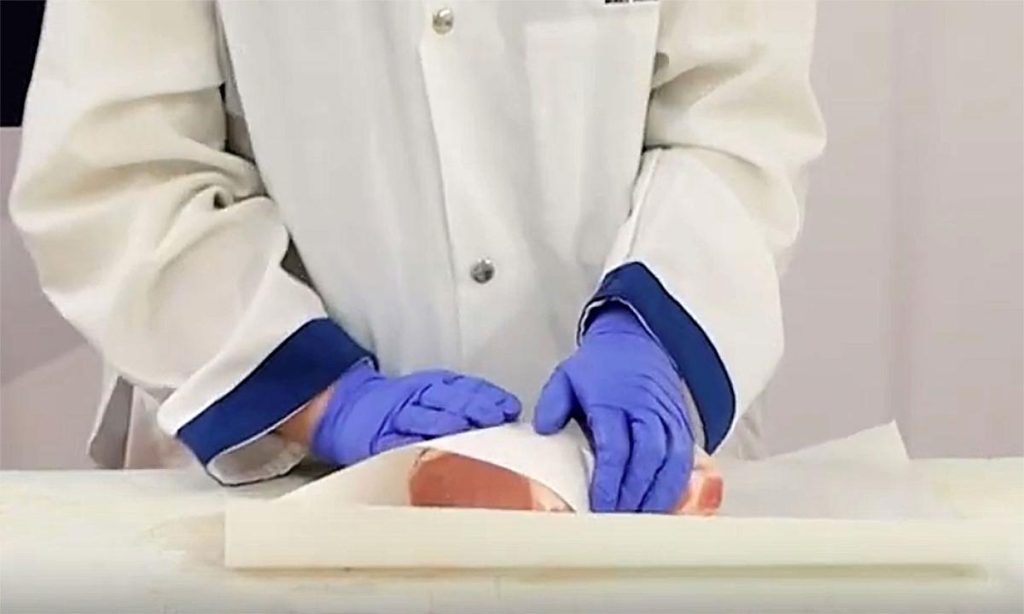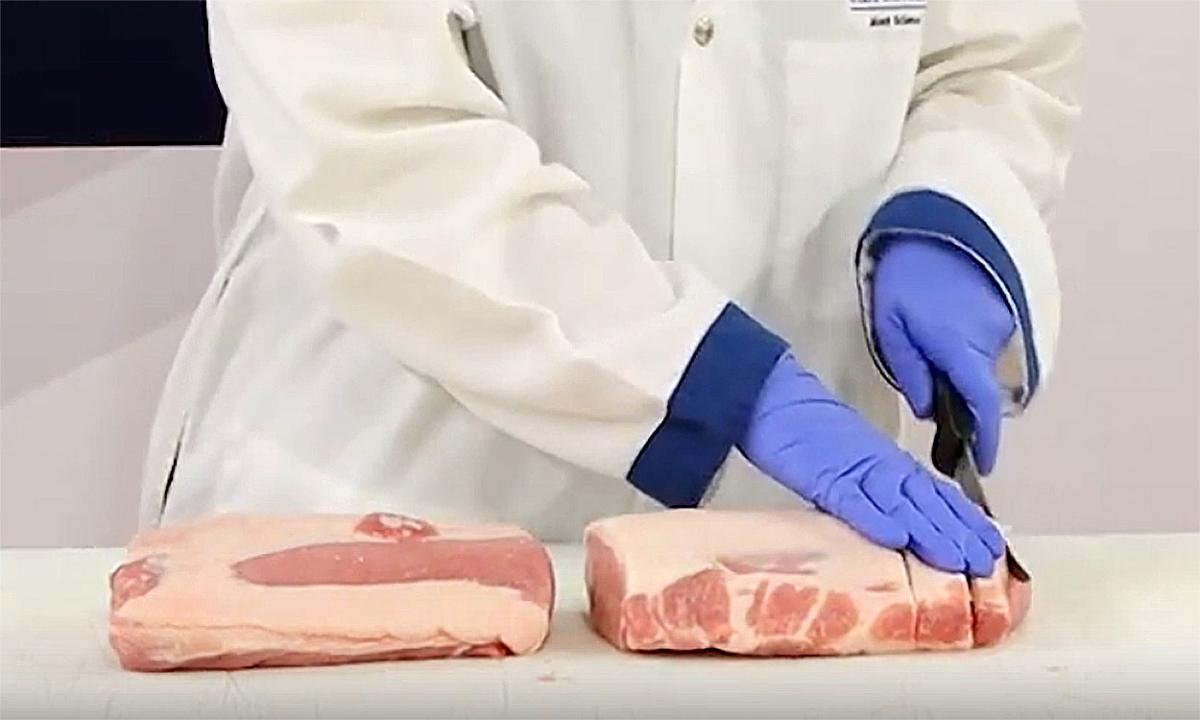It is no secret that making bulk purchases is an easy way to stretch your dollar. Warehouse memberships are very common among today’s consumers, because the money they can save buying in bulk outpaces the cost of the membership in many cases.
This same concept holds true for the meat industry as well. Whether you have the funds and freezer space to purchase whole, half, or quarter animals directly from a producer, or you look for deals wherever you buy groceries, the more pounds you buy, the less you pay per pound.
One bulk meat cut commonly found in grocery stores is the humble pork loin. Weighing in around 8 to 9 pounds, whole pork loins are an easy way to feed a crowd. But you don’t need a crowd to buy one either.
This article will walk you through the different ways to cut a pork loin into more-manageable cuts and how to package and store what you’re not going to eat right away.
How to Cut It
The pork loin is the primal cut that pork loin chops are cut from. One way to make quick work of the pork loin is to cut it perpendicular to the length into chops. It is generally not recommended to cut them any thinner than three-quarters of an inch thick to make sure they stay juicy when cooking. Pork loin chops are easy to cook as is or they can also be cut up into smaller pieces (cubes or strips) for dishes like stir fry or hotdishes.
Another option for the pork loin is to cut it into roasts. For the most part, a pork loin is the same diameter the whole length of the cut. If you cut it into thirds, you will end up with 3 roasts weighing 2.5 to 3 pounds. These roasts can be grilled, roasted, or put in the crock pot, and they will feed 5 to 6 people.
The pork loin also lends itself nicely to kabob meat. Cut the loin into cubes or long strips and slide them on a skewer with your favorite vegetables.
If the price is right and you have a grinder, pork loin can also be ground and used for burgers or mixed with spices for breakfast sausage. However, pork loin is usually trimmed to have little external fat. You may want to pick up a fattier cut like a Boston Butt to mix in. Meat that is too lean tends to dry out quickly.
The pork loin is easy to dress up with a variety of seasonings; with a mild flavor, pork pairs nicely with most flavor profiles, including apple, Caribbean, Asian, and Mexican. If you really want to impress your guests, bacon-wrapped pork loin is always a crowd pleaser.
How to Package It

There are a variety of ways to package and freeze meat purchased in bulk.
First, choose your packaging material. Paper wrapping is generally the most-economical way to package meat products. Butcher paper can be purchased at any store with a food preservation section. There are several methods of wrapping meat with butcher paper. I discuss one method in the video featured at the beginning of this article.
Regardless of the method you use, just make sure you’ve wrapped the meat up tight to prevent exposure to air and reduce the incidence of freezer burn. Paper-wrapped and frozen meat products should be eaten within 6 to 12 months for the best quality.
If you want a little bit more time in the window for the best quality, you may want to look into a home vacuum sealer. Vacuum sealing removes the oxygen from packages and drastically reduces the incidence of freezer burn. Vacuum-sealed meat products are good for around 12 months, but if the seal is still unbroken, it can be good for much longer. One thing to be careful of with vacuum-sealed products is that you want to handle them with care. Too much shuffling around in the freezer can break the seal and increase the chance of freezer burn.
Regardless of the method of packaging you choose, it is important to label the packages before freezing. Using a permanent marker, clearly write the name of the cut and the date you are freezing it. You can also include how much meat is in the package.
For the best quality, it is important to freeze the meat as quickly as possible. If you can, lay the meat out in a single layer in a refrigerator freezer. Freezing meat in multiple layers will take longer for the meat in the middle to freeze. Also, too much weight on paper-wrapped cuts may cause them to leak. Freezing meat in a chest freezer will take longer, as they don’t get the same amount of air movement as a combination refrigerator or freezer. If your only option is a chest freezer, rotate the packages during freezing to ensure everything freezes as quickly as possible.




